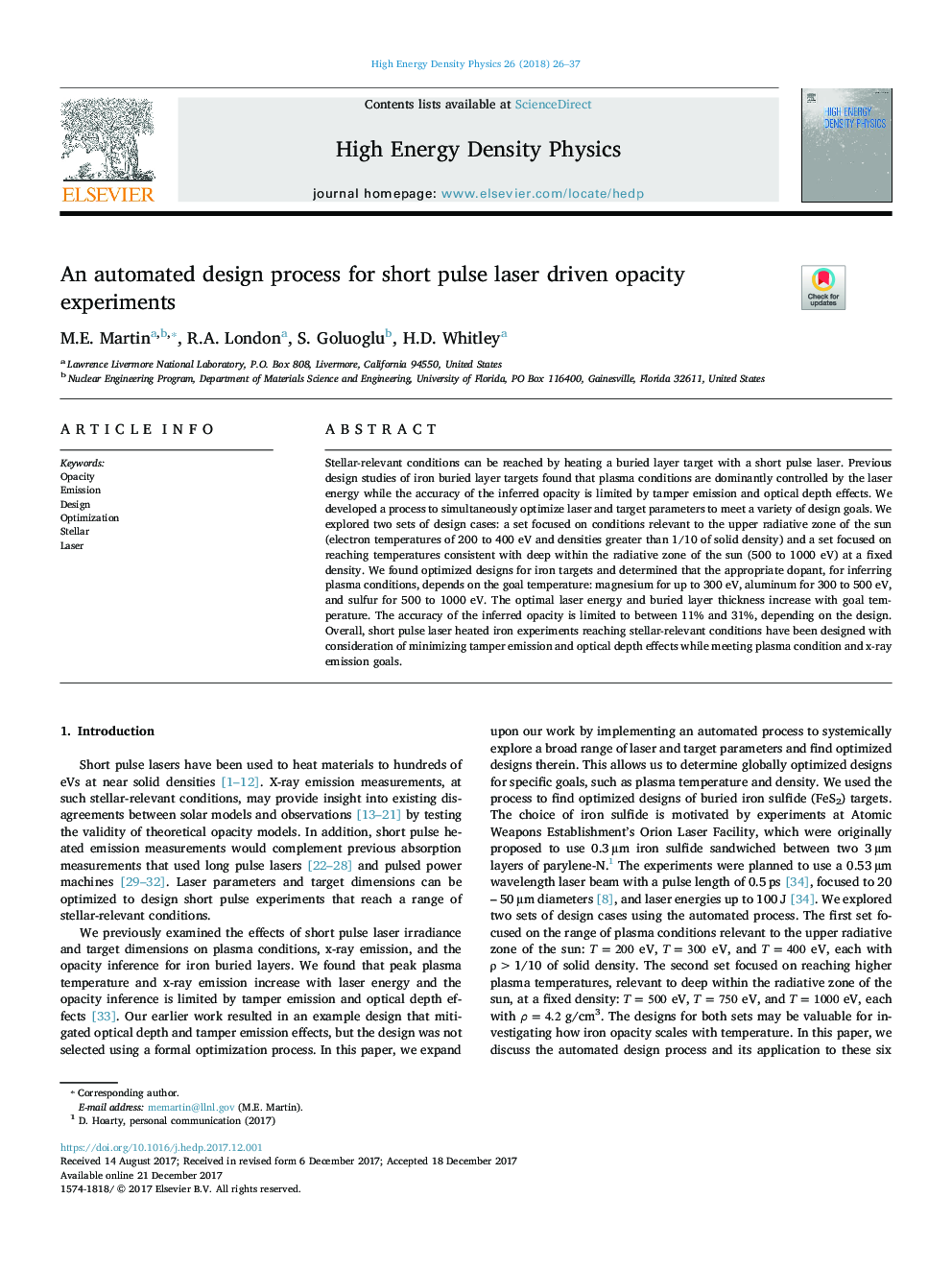| کد مقاله | کد نشریه | سال انتشار | مقاله انگلیسی | نسخه تمام متن |
|---|---|---|---|---|
| 8133469 | 1523441 | 2018 | 12 صفحه PDF | دانلود رایگان |
عنوان انگلیسی مقاله ISI
An automated design process for short pulse laser driven opacity experiments
ترجمه فارسی عنوان
یک فرآیند طراحی اتوماتیک برای آزمایشی کدورت نوری لیزری کوتاه
دانلود مقاله + سفارش ترجمه
دانلود مقاله ISI انگلیسی
رایگان برای ایرانیان
موضوعات مرتبط
مهندسی و علوم پایه
فیزیک و نجوم
نجوم و فیزیک نجومی
چکیده انگلیسی
Stellar-relevant conditions can be reached by heating a buried layer target with a short pulse laser. Previous design studies of iron buried layer targets found that plasma conditions are dominantly controlled by the laser energy while the accuracy of the inferred opacity is limited by tamper emission and optical depth effects. We developed a process to simultaneously optimize laser and target parameters to meet a variety of design goals. We explored two sets of design cases: a set focused on conditions relevant to the upper radiative zone of the sun (electron temperatures of 200 to 400Â eV and densities greater than 1/10 of solid density) and a set focused on reaching temperatures consistent with deep within the radiative zone of the sun (500 to 1000Â eV) at a fixed density. We found optimized designs for iron targets and determined that the appropriate dopant, for inferring plasma conditions, depends on the goal temperature: magnesium for up to 300Â eV, aluminum for 300 to 500Â eV, and sulfur for 500 to 1000Â eV. The optimal laser energy and buried layer thickness increase with goal temperature. The accuracy of the inferred opacity is limited to between 11% and 31%, depending on the design. Overall, short pulse laser heated iron experiments reaching stellar-relevant conditions have been designed with consideration of minimizing tamper emission and optical depth effects while meeting plasma condition and x-ray emission goals.
ناشر
Database: Elsevier - ScienceDirect (ساینس دایرکت)
Journal: High Energy Density Physics - Volume 26, March 2018, Pages 26-37
Journal: High Energy Density Physics - Volume 26, March 2018, Pages 26-37
نویسندگان
M.E. Martin, R.A. London, S. Goluoglu, H.D. Whitley,
